Why Curiosity is the Key to Unlocking Your Creativity
February 28, 2025
Discover how curiosity fuels innovation, enhances problem-solving, and unlocks new creative possibilities.

Creativity is like that friend who always has the best ideas—whether it’s a brilliant marketing campaign, an out-of-the-box business solution, or the next viral trend. But where does that spark of creativity actually come from? The answer isn’t just raw talent or a stroke of genius. It’s something much simpler: curiosity.
At its core, curiosity is that little voice in your head whispering, What if? It’s the drive that makes us ask questions, seek out new experiences, and challenge the way things are done. And the more curious you are, the more creative you become.
This blog dives into why curiosity and creativity are basically best friends, how they work together, and—most importantly—how you can tap into your own curiosity to boost your creative potential.
Curiosity + Creativity = The Ultimate Power Duo
Curiosity and creativity go hand in hand. If creativity is about coming up with new ideas, curiosity is what fuels the process. It pushes you to explore, experiment, and connect the dots in unexpected ways.
Breaking It Down: What Are We Talking About Here?
Let’s define these two key players:
- Curiosity is the drive to explore, ask questions, and seek out new experiences. It shows up in different ways, like:
- Inquisitive Curiosity: Wanting to learn just for the sake of it (aka going down random Wikipedia rabbit holes at 2 AM).
- Exploratory Curiosity: Trying new things, traveling, or testing out different approaches.
- Specific Curiosity: Deep-diving into a particular topic or problem.
- Creativity is the ability to connect ideas in new ways, solve problems, and produce something original—whether it’s a piece of art, an innovative business idea, or a fresh take on an old problem.
How Curiosity Fuels Creativity
Curiosity is the secret ingredient that takes creative thinking to the next level.
Here’s how:
1. It Expands Your Idea Bank
Ever wonder why some of the most creative people seem to know a little bit about everything? It’s because curiosity makes them explore a wide range of topics, which gives them more material to work with.
For example, Leonardo da Vinci wasn’t just a painter—he was also obsessed with anatomy, engineering, and physics. His curiosity about how things worked influenced his art, making his paintings more lifelike and his inventions ahead of their time.
The takeaway? The more you explore, the more creative fuel you have at your disposal. So go ahead, read about something totally unrelated to your field—you never know how it might inspire you later.
2. It Helps You Solve Problems Differently
Creativity thrives on new perspectives. When you're naturally curious, you’re more likely to question assumptions, explore alternative solutions, and approach challenges in unconventional ways.
Take Thomas Edison. He didn’t invent the lightbulb on his first try (or his tenth, or even his hundredth). He experimented relentlessly, driven by curiosity to figure out what would actually work. That persistence—fueled by curiosity—is what led to breakthroughs.
Similarly, many of the world’s greatest innovations come from people who dared to ask, Why does it have to be this way? and What if we did it differently?
3. It Encourages You to Take More Risks
Curiosity makes you comfortable with uncertainty. Instead of fearing the unknown, you lean into it. And let’s be real—most creative breakthroughs happen outside of your comfort zone.
J.K. Rowling, for instance, was deeply curious about mythology, folklore, and the experiences of young people. She combined these elements into the Harry Potter series, even when publishers initially rejected her work. Her willingness to keep exploring her ideas, despite setbacks, is what led to one of the most successful book series of all time.
4. It Leads to More “Aha!” Moments
Ever had a brilliant idea pop into your head while you were doing something completely unrelated? That’s curiosity at work. When you regularly expose yourself to new ideas, concepts, and experiences, your brain makes unexpected connections, leading to those aha! moments of insight.
For instance, Steve Jobs credited a random calligraphy class he took in college for inspiring the typography and design elements that made Apple products stand out. He didn’t take the class thinking it would help him build a tech empire—he took it because he was curious. And that curiosity paid off in a big way.
How to Strengthen Your Curiosity and Creativity
If you want to take your curiosity to the next level and supercharge your creativity, here are some practical steps to follow:
1. Develop an Open Mindset
Stay receptive to new ideas and perspectives. Challenge your assumptions and consider viewpoints that differ from your own. This practice helps break down mental barriers that can limit creative thinking.
2. Step Outside Your Comfort Zone
Try something new—whether it’s traveling, learning a new skill, or engaging in a hobby outside your usual interests. Exposure to different experiences fosters unique ideas and connections.
3. Ask Better Questions
Instead of just seeking answers, focus on asking deeper, open-ended questions. Instead of "How do I fix this?", ask, "What are all the possible ways to approach this?"
4. Embrace Uncertainty and Failure
Rather than fearing mistakes, view them as stepping stones to learning and innovation. Many groundbreaking ideas come from those who weren’t afraid to explore unknown territory.
5. Surround Yourself with Curious People
Engage with individuals who inspire curiosity. Conversations with inquisitive minds can introduce new perspectives and fuel your own creative thinking.
Curiosity isn’t just a trait—it’s a muscle that can be strengthened over time. By intentionally cultivating curiosity, stepping outside your comfort zone, and challenging your assumptions, you create an environment where creativity thrives.
And if you’re wondering how to harness curiosity even further—good news! In the next part of this series, we’ll explore specific strategies to push curiosity to new heights and maximize its impact on your creative potential.
So go ahead, follow your curiosity—you never know where it might lead!
In Part 2, we’ll explore practical techniques like ‘what if’ thinking, overcoming fear of failure, and building daily curiosity habits to supercharge your creativity.
Stampede Social is built specifically for creators and teams looking to monetize their social channels faster, smarter and easier. It's time to reclaim YOUR time and make your social channels work for you. Stampede Social is the perfect platform for Instagram DM automation and more!


